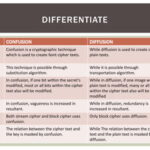In the realm of modern cryptography, quantum cryptography emerges as a beacon of hope akin to a lighthouse guiding ships through tumultuous waters. This nascent domain not only leverages the peculiarities of quantum mechanics but also redefines the very fabric of secure communication. In this exposition, we shall traverse through the landscape of quantum cryptography algorithms, illuminating the pathways carved by their ingenious constructs.
The genesis of quantum cryptography is intrinsically linked to the concept of quantum key distribution (QKD). Here, one of the most prominent algorithms is the BB84 protocol, devised by Charles Bennett and Gilles Brassard in 1984. Picture a treasure map, where only the intended recipients possess the key to unveil the location of the hidden riches. This algorithm employs quantum bits, or qubits, represented as polarized photons which are sent over a quantum channel. As these photons traverse through space, they manifest the duality of existence – alive and unobserved, but susceptible to disruption. If a nefarious interceptor attempts to eavesdrop, the very act of observation alters the quantum state of the photons, alerting the sharing parties to potential interception.
BB84 is only the tip of the proverbial iceberg. The realm of quantum cryptography unveils a trove of other splendid algorithms, each suffused with its own unique attributes. Among them is the E91 protocol, formulated by Artur Ekert in 1991. This algorithm capitalizes on the phenomenon of quantum entanglement, much like two waltzing dancers whose movements are intricately linked regardless of the distance separating them. In E91, pairs of entangled photons are generated and sent to the communicating entities. When measured, the outcomes display a correlation stronger than classical physics can support. This property ensures that any attempt at interception can be detectable, as the entangled state would collapse, irrevocably altering the original correlation, thereby sounding an alert to the communicators.
Moving further along this path, we encounter the quantum digital signature (QDS) scheme, an innovative additive to the cryptographic lexicon. Imagine signing your name in the stars – a signature that is not only unique but also immutable. This algorithm employs qubits to create digital signatures that are authenticated with quantum principles. QDS can withstand the perils of eavesdropping and tampering, offering a robust framework for applications that require absolute integrity, such as electronic voting systems or financial transactions. Traditional signatures, reliant on mathematical complexity, are susceptible to advancements in computing; however, the quantum counterpart remains firmly anchored in the realm of physics.
In the pursuit of versatile and efficient algorithms, the concept of quantum homomorphic encryption surfaces like a phoenix rising from its ashes. This transformative approach allows computations on encrypted data without necessitating decryption. Consider the analogy of a locked box where one can perform operations without ever opening it. This allows the data to maintain its confidentiality while still permitting useful processing. This algorithm paves the way for secure cloud computing, where sensitive information can remain private even amidst operational tasks.
As we delve deeper, we discover quantum key encapsulation mechanisms (QKEMs). These methodologies hybridize the principles of classical cryptography and quantum theory. Picture a double-locked chamber where the keys can only be accessed under specific conditions. QKEMs utilize classic keys wrapped in quantum envelopes to create a complex layering of protection. Such schemes are particularly favorable for cryptographic protocols, offering a seamless fusion that enhances security while harnessing the duality of quantum and classical worlds.
Each of these algorithms, while standing alone, can be integrated through quantum repeaters, which act as intermediaries extending the range of quantum communication. Envision a relay race, where each quantum repeater passes the baton of secure information over greater distances, overcoming the limitations of direct photon transmission. This technology allows quantum signals to traverse vast expanses, fostering a global network of quantum cryptography, with its appeal extending beyond just individual applications to encapsulate a vision of a secure future.
Furthermore, the continuing advancements in quantum cryptography highlight innovations such as quantum-secure key exchange protocols, which are paramount in establishing secure channels even in the age of quantum computers. This is not merely an evolution; it is a revolution that underscores the urgency of transitioning to quantum-resistant systems. The specter of quantum computers, capable of dismantling traditional security algorithms, looms large. Hence, embracing quantum cryptography is akin to shifting from wooden paddles to a yacht in navigating the turbulent waters of information security.
In conclusion, quantum cryptography algorithms represent not merely a technical evolution, but a philosophical one that challenges our concepts of privacy and security. By intricately weaving the threads of quantum mechanics into the tapestry of cryptographic practice, they offer a glimpse of a future where secure communication is not only attainable but also resilient against the ever-evolving threats of the digital realm. Each algorithm, from BB84 to QDS, embodies the dualities of structure and chaos, security and fragility, affirming that in the quantum world, safeguarding our secrets is as much a science as it is an art.








Leave a Comment